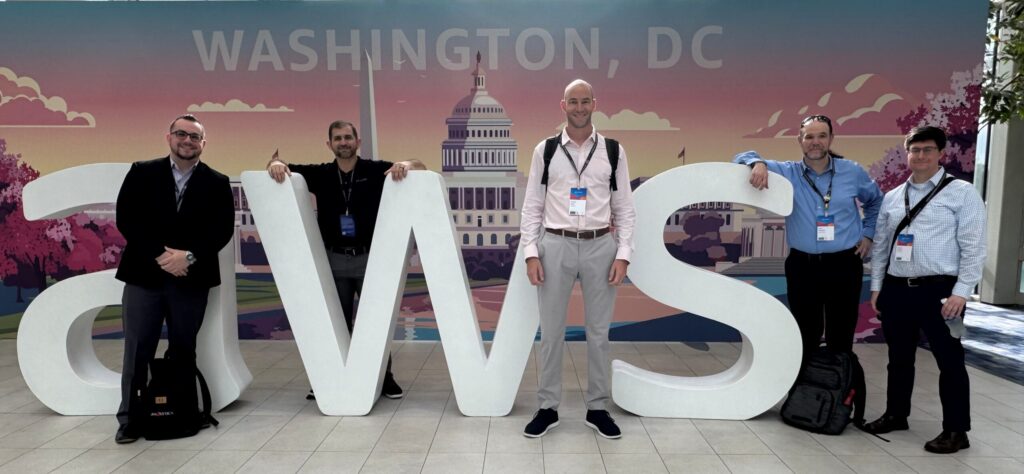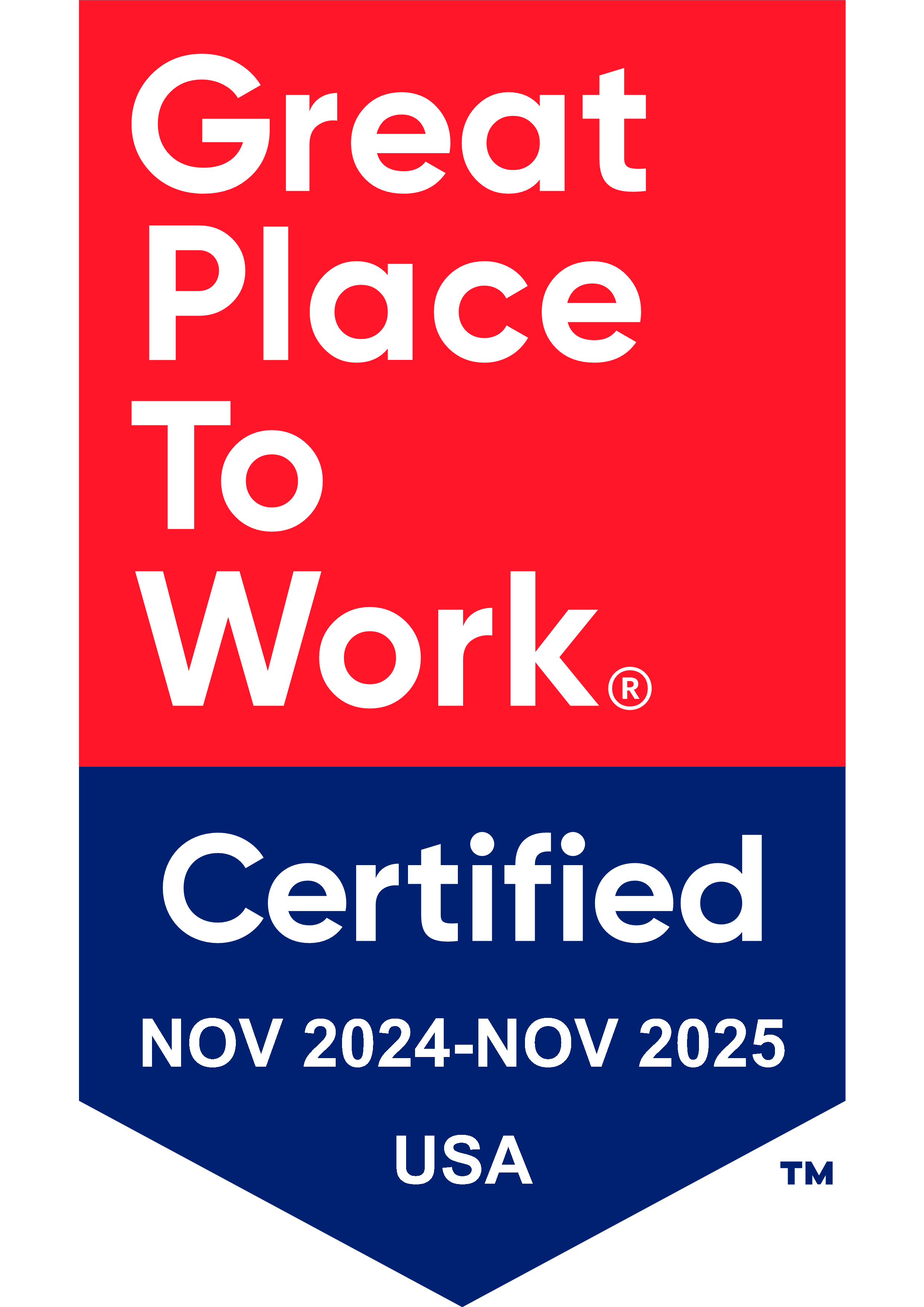AWS Summit Washington, DC 2025 was a great opportunity for Analytica’s technology solutions team to engage with the AWS community. Whether looking to network, connect with vendors, attend fire-side chats or get hands-on experience, AWS Summit had something for everyone. I’m excited to highlight some of our takeaways from the conference. While AI and AI agents are still major focus points, several AI-adjacent tools and various other talks provided opportunities to reflect on our strategies as federal consultants.
Everything AI
AI Agents, or Agentic AI, are on the tip of everyone’s tongues everywhere, and the AWS Summit was certainly no exception. AI Agents are all we seem to hear about lately, but if this is the first time you’re hearing about them: they’re functions that assist an LLM to perform a task such as accessing data or using specific tools. Every agency ultimately has to decide whether to use one agent that’s responsible for many things or use several specialized agents. Sometimes, using one single agent can make the coding complicated or confuse the LLM so that responses are slower and more expensive. Having multiple agents that do single tasks has its own challenges, especially in terms of keeping latency down.
We enjoyed hearing of some of the tools available for helping developers build scalable agent infrastructures. AWS Bedrock agents leverage an “orchestration agent” to plan and execute complex tasks across agents by using built-in intent classification. In other words, given a prompt, Bedrock’s built-in classification capabilities determine which agent is best suited to respond, and AWS Bedrock’s library of Foundation models means an architect can use agents to assign small models to answer straightforward prompts, or provision large reasoning models for more complex prompts.
Another key piece of technology to keep in mind is Model Context Protocol (MCP). MCP is an industry-standard way to connect AI models to data sources and AI-powered tools. Bedrock supports MCP tools through agent APIs. MCP servers and clients on AWS are run via open-source libraries, while open-source AWS MCP servers directly address the use case of having agents serve as a backbone for code assistants – an area AWS likely knows a great deal about given their Amazon Q offerings in the code-assistant space. MCP is even available in a serverless capacity as well (more on serverless later).

Other AI highlights from the conference included integrations with vLLM: an open-source inference engine focused on efficient LLM serving, improving throughput and latency. AWS is a major contributor and funder of the vLLM effort both via direct code contributions and infrastructure support – underscoring its strategic alignment with AWS’s AI roadmap.
Everything Else
Our more technical attendees found great value in the builder sessions. We especially appreciated the inclusion of pre-provisioned lab environments that facilitated our hands-on experience buildin We enjoyed neo4j’s talk on how to make the most of RAGs with GraphRAG techniques, especially while we experiment with various types of GraphRAG architectures not only for minimizing hallucinations from LLMs, but also for augmenting our data science applications of Neo4j graph offerings in general.
While mentioned briefly in the multi-agent talk, serverless architecture was highlighted at several talks that we attended. We walked away intrigued and excited about sampling some of AWS’s offerings. Talks covered a wide range of skill levels, from the conceptual “thinking serverless” to best practices of serverless architecture. Our team found value in the foundational conversation about a switch from a server-based thinking structure to a serverless approach, thinking in atomic activities instead of in terms of servers. The presentation about architecting for serverless resilience provided great insights that we can implement in our client support. The great hands-on serverless data integration session allowed our team to apply some of the concepts we learned during Summit. The range of options and complexity provide a solid foundation for the wide range of customers we serve.
Another highlight of Summit we are intrigued by is AWS Connect: a comprehensive customer experience platform. AWS Connect supports multiple communication channels including voice, SMS, and auto-callback functionality through virtual queuing systems. The platform provides robust analytics capabilities with easy SSO authentication access, built-in reports and dashboards, and real-time data monitoring. Its AI and machine learning features leverage call recordings and transcripts to automatically generate issue and outcome analysis, eliminating the need for manual sampling while identifying critical events for review.
The system includes agent performance evaluation through automated analysis and Contact Lens, an administrative tool that supports training and coaching based on interaction ratings. A notable implementation includes a virtual agent that responds to voice commands, supported by a knowledge base fed by 60 different agency data sources. The platform integrates seamlessly with existing CRM systems and features Amazon Q, which provides real-time call handling suggestions based on text inputs or typed questions. This AI assistance helps create consistency across interactions, reduces time-to-productivity for new agents, and can expand brief suggestions into full articles or source materials when needed.
Finally, we would be remiss if we failed to mention the fireside chats at AWS Federal FINovate Day, which took place in the afternoon of day 2. These conversations discussed how leaders from federal agencies have or plan to leverage generative AI and cloud-based technologies to meet mission-critical objectives. It’s always interesting to hear directly from federal leaders what matters to them, but it was particularly interesting to hear leaders from two federal agencies speak on the specific value of using generative AI to extract value from unstructured data.
Senior VP of Fannie Mae Steve Holden spoke on his mission to facilitate sustainable ownership of housing; with over 17.5 million mortgages under oversight and management in the range of $3 trillion, there’s an abundance of opportunity to be had from enabling querying unstructured data. For example, generative AI helped augment Fannie Mae’s existing NLP, ML and OCR processes used to analyze first-time homebuyers bank statements. Similarly, Chief Data Officer Austin Gerig from SEC noted the importance of figuring out which data to place in vector stores, how to index the unstructured data, and most importantly, how to make it accessible with AI. Moreover, it’s just as important to figure out how to perform those operations to scale, minimize duplicative and inefficient workstreams, and making available related assets to a broad number of use cases.
Summit Wrap-up
AWS Summit DC reinforced that while AI continues to dominate the technology landscape, successful federal consulting requires a strategic approach that balances cutting-edge capabilities with practical implementation considerations. From multi-agent orchestration in AWS Bedrock to comprehensive customer experience solutions like AWS Connect CX, the conference demonstrated that the most valuable innovations solve real operational challenges while maintaining scalability and cost-effectiveness. The insights from industry and federal leaders particularly underscored that generative AI’s true value lies in unlocking actionable insights from vast repositories of unstructured data that agencies have accumulated over decades. As federal consultants, our role is to help agencies thoughtfully navigate this landscape—selecting and integrating the right combination of AI toolsets, serverless architectures, and analytics platforms to deliver measurable mission impact while ensuring alignment with agency-specific needs and strategic objectives.
 Robert Gordon | 8/11/2025
Robert Gordon | 8/11/2025

